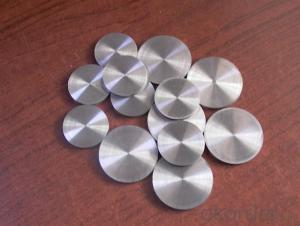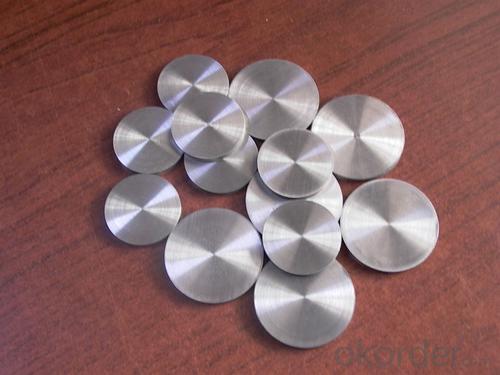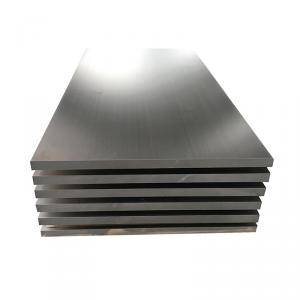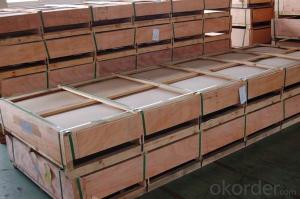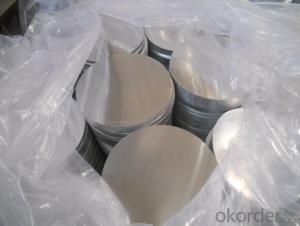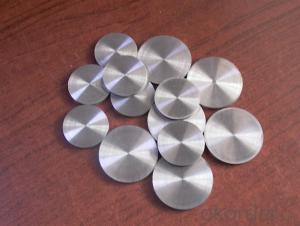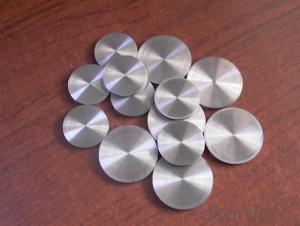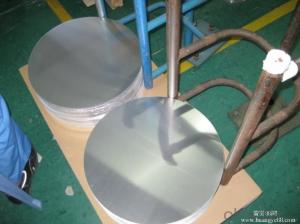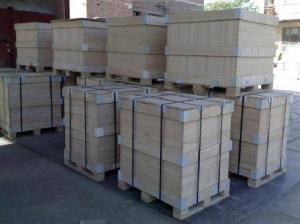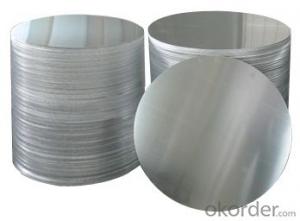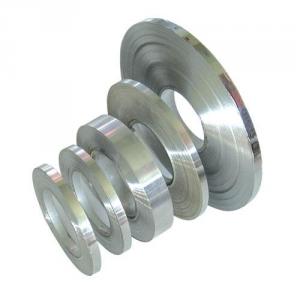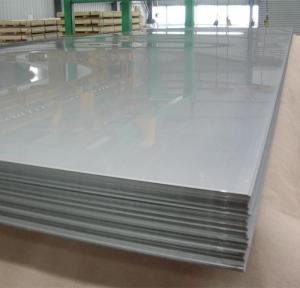Aluminum Sheets 4x10 for Direct Casting Aluminium Circles for Spinning Pot
- Loading Port:
- Shanghai
- Payment Terms:
- TT OR LC
- Min Order Qty:
- 2 m.t.
- Supply Capability:
- 5000 m.t./month
OKorder Service Pledge
OKorder Financial Service
You Might Also Like
Specification
1.Structure of Direct Casting Aluminium Circles for Spinning Pot
Direct Casting Aluminium Circles for Spinning Pot strip can be rolled down to aluminium coil,sheet,circle ect. The alloy AA1050 is widly used in building, industry ect. Its weight is much lower than steel. So many customers choosed aluminium material instead of steel.
2. Main features of Direct Casting Aluminium Circles for Spinning Pot
a.Competitive price---We have our own mills and can produce mill finished aluminium coils, so we can control the production cost better.
b.Professional after-sale service---We have more than 15 years exportation experience and you need not worry about the exporation problems.
c.Fast delivery time---We can control the delivery time within 35 days.
3. Image of Direct Casting Aluminium Circles for Spinning Pot
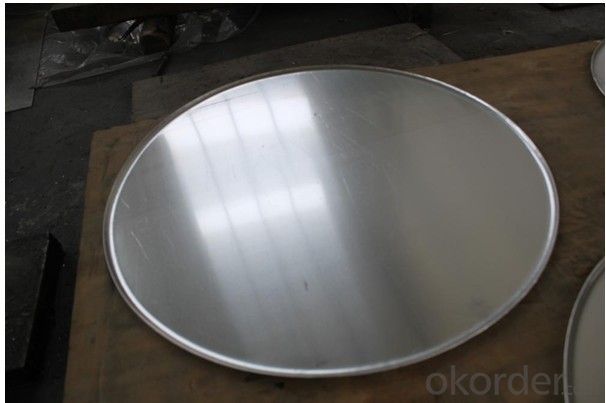
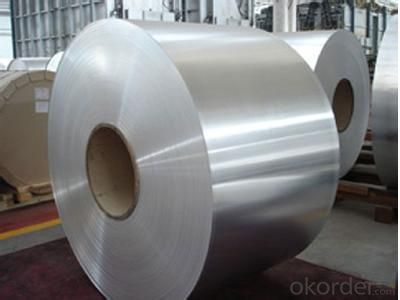
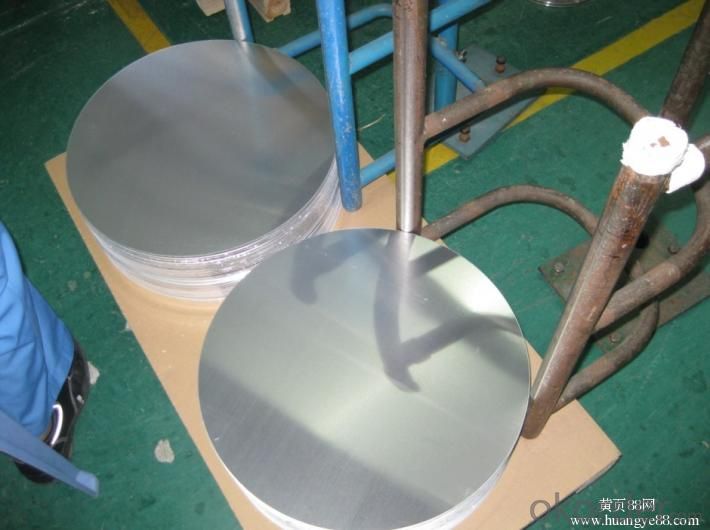
4. Product Specification of Direct Casting Aluminium Circles for Spinning Pot
| Alloy | Temper | Thickness | Width | Weight |
| AA1050 | H14 | 0.2-3MM | 1000-1800MM | 2 tons |
5.FAQ of Direct Casting Aluminium Circles for Spinning Pot
What is the quality standard?
---Usually our standard is GB3880-2006
What is the largest width?
---It is 2300mm
What is the MOQ?
---Usually we can accept 80 tons.
- Q: What are the different types of surface treatments available for anodized aluminum sheets?
- For anodized aluminum sheets, there exists a range of surface treatments that can enhance the appearance, durability, and functionality of the material. One option is the brushed finish, which involves using abrasive materials to create parallel lines on the sheet. This technique gives the aluminum a matte appearance and effectively conceals scratches and fingerprints. Another treatment is the mirror finish, achieved through polishing the sheet to create a high gloss, mirror-like reflection. This finish is commonly used for decorative purposes and provides a sleek and modern look. Etching is a process in which chemicals or abrasives are used to remove a thin layer of the anodized coating, creating a textured or patterned design on the sheet. This technique allows for customization and unique aesthetics. Powder coating is a popular treatment in which a dry powder is electrostatically applied to the anodized aluminum sheet and then cured under heat. This creates a durable and customizable coating in terms of color, texture, and finish. For a smooth, brushed appearance, satin finish involves sanding the aluminum sheet with fine grit sandpaper. This finish gives the surface a subdued and elegant look. Mechanical finishes encompass various techniques like polishing, buffing, or grinding to achieve different textures and finishes. The final result can range from smooth and glossy to rugged and textured, depending on the desired effect. Chemical treatments such as anodizing, chromating, or chemical brightening can enhance the corrosion resistance, color, and overall appearance of the aluminum sheet. They also improve the adhesion of paints or adhesives to the surface. It is important to consider that the availability of these surface treatments may vary depending on the manufacturer and specific requirements. Consulting with the supplier or manufacturer is recommended to determine the most suitable treatment for your application.
- Q: How does the thickness of aluminum sheet affect its formability?
- The formability of an aluminum sheet is greatly impacted by its thickness. Generally, thinner sheets of aluminum are more easily shaped and are more malleable compared to thicker sheets. This is due to the fact that thinner sheets have less resistance to deformation and require less force to bend or stretch. On the other hand, thicker aluminum sheets have higher resistance to deformation and are less malleable. They necessitate more force and energy to shape, and are more susceptible to cracking or tearing during forming processes. Additionally, thicker sheets are more likely to experience springback, where the material partially returns to its original shape after being formed. The formability of aluminum sheets is also influenced by the specific forming process being used and the alloy composition. In certain cases, specific alloy compositions or heat treatments can enhance the formability of thicker sheets, making them easier to shape. In conclusion, the formability of an aluminum sheet is directly affected by its thickness. Thinner sheets are generally easier to shape and more malleable, while thicker sheets require more force and are less malleable. The alloy composition and specific forming processes being used can also impact the formability of aluminum sheets.
- Q: When Aluminium nitrate is heated , i got yellow amorphous solid which did not not melt on further heating. What compound is that?
- l would say you have mostly aluminum oxide as a product which probably contains some Nitrogen dioxide gas, a second product of the decomposition of aluminum nitrate. If I were you I would not heat nitrate salts as they can explode upon heating. they also need to be kept away from any kind of reducing agent such as powdered metals, or any fuels, reactions can be violent.
- Q: What is the typical flammability rating of aluminum sheets?
- Class A flammability ratings are typically assigned to aluminum sheets. This rating indicates that they possess a strong resistance to fire and are unlikely to ignite or facilitate the spread of flames. Aluminum is classified as a non-combustible substance, which is why it is widely favored in industries like construction, transportation, and aerospace, where fire safety is a priority. Additionally, its elevated melting point and exceptional heat dissipation qualities further contribute to its ability to withstand fire.
- Q: How do aluminum plates drill?
- There are many drilling equipment for aluminium sheets,First, the engraving machine can be big or small, and can shape strange.
- Q: This question asks for a list of various adhesive types that are suitable for bonding aluminum sheets together.
- <p>There are several types of adhesives used for bonding aluminum sheets, including epoxy adhesives, which are strong and resistant to heat and chemicals; acrylic adhesives, known for their flexibility and UV resistance; cyanoacrylate or super glue, which offers fast bonding; polyurethane adhesives, providing excellent adhesion and durability; and silicone adhesives, which are great for high-temperature applications. Each type has its specific properties and applications, making them suitable for different bonding requirements and environmental conditions.</p>
- Q: How does the price of 101 aluminum sheets compare to other aluminum alloys?
- The cost of 101 aluminum sheets may fluctuate based on various factors like market conditions, demand, and supply. Nonetheless, in general, 101 aluminum alloy is regarded as one of the more affordable choices among aluminum alloys. It is a popular option due to its relatively low price and satisfactory overall performance. When compared to other aluminum alloys, particularly high-strength alloys like 7075 or 6061, 101 aluminum sheets tend to be less expensive. This is because 101 aluminum is a relatively uncomplicated alloy with a lower content of alloying elements, resulting in lower production costs. However, it is important to note that the price difference between aluminum alloys can vary depending on current market conditions and specific requirements. Factors such as sheet thickness, size, and quantity can also impact the final price. Therefore, it is always advisable to consult suppliers or manufacturers to obtain the most accurate and up-to-date pricing information for 101 aluminum sheets in comparison to other aluminum alloys.
- Q: Can aluminum sheets be used in automotive applications?
- Aluminum sheets find their utility in automotive applications. This lightweight and sturdy material brings a multitude of advantages to the manufacturing of automobiles. It is widely employed in the creation of car bodies, hoods, doors, roofs, and various other components. By incorporating aluminum sheets into automotive applications, the overall weight of the vehicle can be reduced, thereby enhancing both fuel efficiency and performance. Moreover, aluminum boasts exceptional resistance to corrosion, making it well-suited for enduring harsh weather conditions and exposure to road salt. Additionally, aluminum can be easily molded and shaped, facilitating intricate designs and detailing on automotive parts. In summary, the utilization of aluminum sheets in automotive applications contributes to the creation of vehicles that are lighter, more fuel-efficient, and visually appealing.
- Q: What is the electrical conductivity of 101 aluminum sheets?
- The electrical conductivity of 101 aluminum sheets is high due to aluminum being a good conductor of electricity.
- Q: What are the different types of surface coatings for aluminum sheets?
- There are several types of surface coatings available for aluminum sheets, including anodizing, powder coating, painting, and laminating.
Send your message to us
Aluminum Sheets 4x10 for Direct Casting Aluminium Circles for Spinning Pot
- Loading Port:
- Shanghai
- Payment Terms:
- TT OR LC
- Min Order Qty:
- 2 m.t.
- Supply Capability:
- 5000 m.t./month
OKorder Service Pledge
OKorder Financial Service
Similar products
Hot products
Hot Searches
Related keywords
